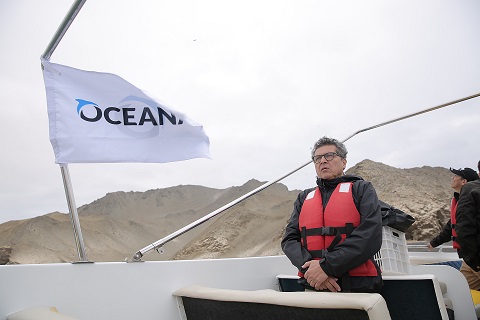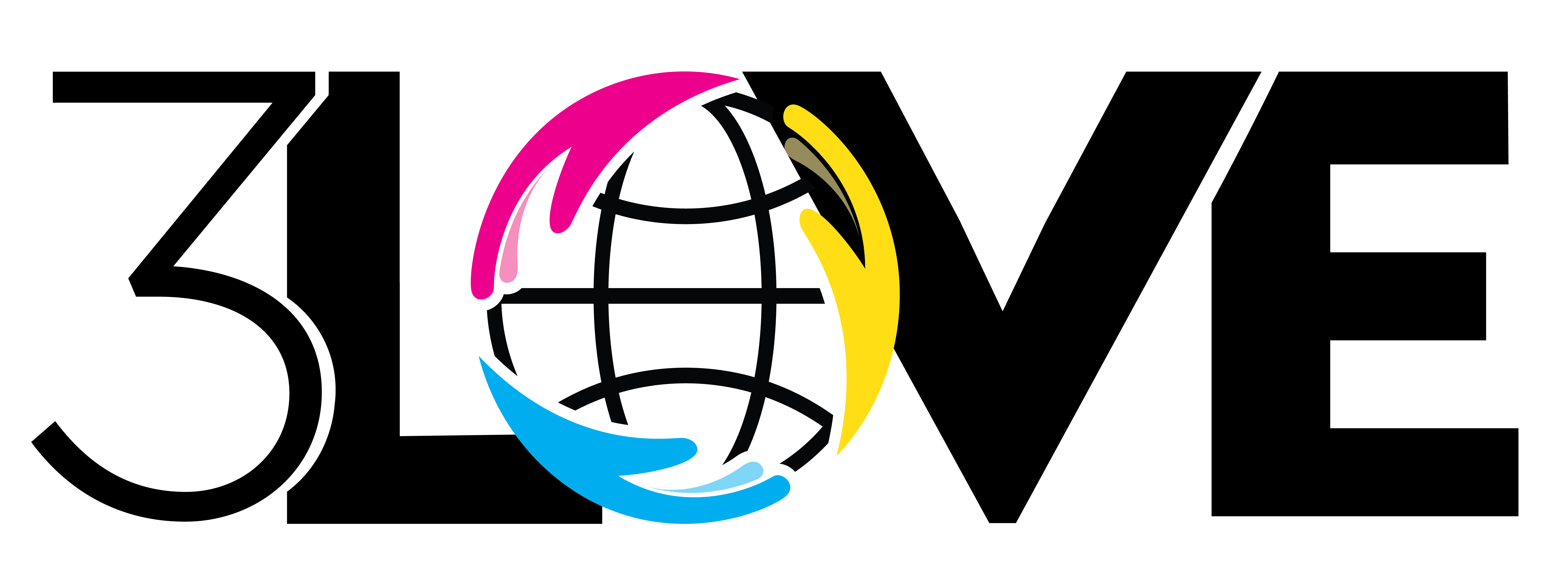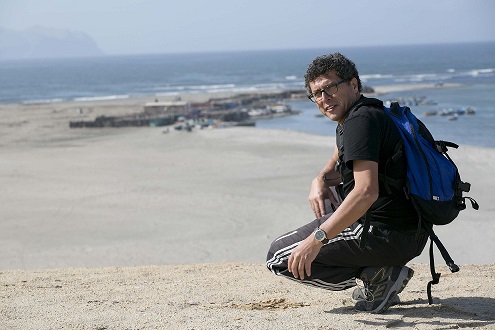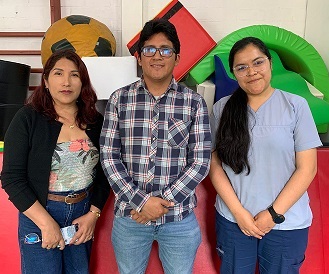Juan Carlos Riveros is a Peruvian biologist who serves as Scientific Director of Oceana Peru, the largest international organization dedicated to protecting the world’s oceans. As part of his professional career, Juan Carlos has specialized in using science to support decision-making on energy and climate change adaptation. As World Oceans Day was recently celebrated, we interviewed Juan Carlos for the 3Love Inc. blog to discuss everything the seas have to offer us, the main problems threatening them, and some strategies for raising awareness about their importance.
World Oceans Day was recently celebrated. Why are oceans necessary for humanity and the environment?
Oceans are a fundamental part of the geochemical cycles that sustain life on the planet. If there were no oceans, the planet would be several times hotter. We would also not have the water cycle, we would not have rain. In other words, life would be completely incompatible in a scenario where there were no oceans. In addition, oceans provide us with a good portion of our protein and sustain a significant part of the food supply for farm animals. So, our civilization really could not have advanced very far if it weren’t for the oceans providing us with the inputs to sustain the expansion of food production and food security in general. They also contribute to maritime traffic and transportation. Without the oceans, it would be extremely difficult to move around, since the surface of the seabed is not uniform, but rather very similar to the Himalayas. So, without the oceans, there would be no global communication routes, which allow us to manage trade and food supply. And finally, there is the issue of job opportunities. Around the world, between 700,000 and 1 million people depend on the ocean as a direct source of employment. Combining all these elements, we have a physical machine that regulates the climate, provides us with oxygen, stores carbon, offers us work, and gives us food. Then there is the beauty of what lies beneath in terms of biodiversity and animals, the majesty of whales, flying manta rays, large schools of fish, penguins, seabirds, and turtles. I don’t think there is a person in the world who is not excited or at least impressed by the variety and the things we can find at the bottom of the sea. The most interesting thing is that we have not yet scratched the surface of the sea, and around two thousand new species are added every year. The seabed has not been completely mapped; we know that there are areas that we have not even been able to descend to. It really is the final frontier in terms of our knowledge. In addition, marine animals are appearing that we probably saw as trash in the past, but it turns out that these little animals, almost always sea slugs, have chemicals that they generate to defend themselves and prevent them from being eaten. Eventually, these chemicals serve as patterns for analysis to continue creating new medicines, even for diseases that we may not even know about yet. So, it’s incredible, it’s a library of genetic sequences that are there, waiting to be discovered, and therefore need to be properly managed and protected.
In this context, how can we care for and protect the oceans?
In general terms, there are three major problems with the oceans. The first and most important is pollution. Unfortunately, it has a very strong impact on the oceans because, on the one hand, we have always seen them as something that is infinite and gigantic, and no matter how much trash we throw into them, the ocean is still there, but there are saturation points. Ninety percent of the extra CO2 we generate goes into the ocean, mixes with seawater, and causes ocean acidification, which affects shells, the calcareous coverings of microorganisms, which are the base of the food pyramid. So, if those little animals don’t generate their shells and don’t grow or die along the way, what happens is a cascade of collapses. We are already seeing this happening on a small scale. And it would not be surprising if we add more CO2 to the sea, it ends up being even more catastrophic. Secondly, the other terrible form of pollution we have is that which comes from rivers. Historically, in most countries, rivers have been the drains that have carried waste away from cities, originally organic and domestic waste, then industrial waste, and today also mining and agricultural waste. Mining waste, excess pesticides, and fertilizers end up in the seas. Some things dissolve or degrade because bacteria do that work, but others basically become part of the tissue of animals, and there are fish that accumulate it or fish that eat other fish that are contaminated and absorb that contamination and keep it in their bodies. There is evidence of fish contaminated with ibuprofen, antibiotics, toxic agricultural residues, or food industry dyes. All of this goes into the sea and then back onto our tables. And on top of the problem of pollution, there are plastics and solid waste. We have seen evidence that plastics cause tremendous damage to biodiversity, which can accumulate and lead to genetic malformations. Interestingly, it is not bottles or large pieces of plastic, but microplastics, which come from the fibers of our synthetic clothing, that come off tires, are micropulverized by traffic, and are carried by the wind, cleaning systems, and poorly constructed landfills, end up in the sea. These microplastics are extremely toxic and harmful to fish, sticking to their gills. There are some cases of animals in which these plastics have been found not only in the digestive system, but also in the circulatory system, and eventually the chemicals associated with these plastics pass into the flesh. And obviously, if you eat fish that is almost raw, such as in a delicious ceviche, we are quite exposed to this, especially when it comes to seafood. Heavy metals such as mercury and cadmium have been found in toyo and some sharks. These heavy metals come from mining activity.
The second problem is illegal fishing. It is estimated that at least one-third of all fish landed worldwide is either unregistered, undocumented, or simply illegal. That is, it was caught in a place where fishing was prohibited or using a fishing method that was not allowed. This includes fishing in protected areas, fishing with explosives, fishing for animals that are closed season, pregnant, or undersized. On the one hand, the big problem is the lack of information among those involved. Many people engage in illegal fishing without knowing that it is illegal, either out of ignorance or necessity. The other part of the problem is the lack of control. In a country like ours, which has more than 100 official landing points, in practice we only monitor or supervise around 50. There is no control or oversight. Apart from that, we have a whole legal infrastructure that encourages this type of fishing. We have long-distance fleets that are not well regulated, not only from a management point of view, but also from a labor point of view. There are documented cases of ships that have not touched port in three years, in which people are recruited in Indonesia or the Philippines and are never allowed to disembark. Their passports are taken away and they are kept as slaves. And finally, there is overfishing, which occurs when the rate at which you extract the resource is greater than the rate at which it is replenished. As a result, several fisheries around the world have collapsed. However, over the last 40 years we have learned our lesson, and now there is better regulation. Peru, at least, is a global example of fisheries management; we have a fairly well-managed fishery. There is a promising outlook, partly due to pressure from markets that are demanding greater care. Consumers tend to be smarter because they are better informed and prefer fish that is traceable and not illegal, and the need for fair trade is becoming increasingly fashionable. In other words, I no longer buy fish just because it has a label that says it is sustainable, but because, for example, that fish has been caught by an artisanal fisherman. It is interesting how the artisanal fishing sector is much more aware of its needs and challenges.
The third major threat is climate change, which alters the distribution of fish stocks. In Peru, we have the El Niño phenomenon, which is like a preview or trailer of climate change. And we have to adapt. Obviously, it is very difficult for the industry to adapt to these circumstances. So, we have to think about what strategies, what alternatives, what will happen next; we have to be proactive. Artisanal fishermen have it a little easier because they are resourceful, what they call Peruvian ingenuity, they adapt quickly. It is not that simple, but you can find resources of opportunity and possibilities to safeguard that problem, but even so, it requires support from the state and an overall vision. There are a number of problems related to climate change that go beyond the merely climatic, but have to do with supply, demand, price elasticity, and infrastructure, because it is useless to have a thousand tons of lobster coming into the north if there are only four cold storage rooms or if there are not the ideal conditions to ensure the health of the product, to send it to Lima or export it. So, we continue to plug gaps, and climate change is something that is already a “done deal”; it is simply a matter of waiting for the product to be delivered to us. I believe that we are quite behind in terms of adaptation and how to prepare or improve our industry and our artisanal fishing in the face of events that may occur in the future.
What kind of campaigns and activities does Oceana carry out to protect the oceans?
Globally, there is a wide range of activities. Oceana’s motto is “Save the oceans to feed the world.” Our rationale is that if we ensure that the oceans are healthy in general terms (less pollution, better management), they will provide food for more people. If today 700,000 or 800,000 people feed themselves from the oceans, we could reach 1.4 million. Our assessments in African countries have found that if these countries improve their capacity to manage their stocks well, for example, by ensuring that fish is used directly for human consumption rather than being turned into meal to feed chickens, this could have a much greater nutritional impact in countries that need these nutrients. Even in our country, it is one of the ironies that we export anchovies and basically export protein, which is what children in much of the country need most. We believe we can work to make nutritious fish accessible to people. And in the case of Peru, we work on campaigns that are 3- to 5-year efforts to bring about policy change primarily. Our focus is on supporting evidence-based, science-based legal changes with a detailed or evident social impact. For example, in recent years we have worked to reduce illegal trafficking of species. Together with other organizations, we have succeeded in passing laws that significantly increase penalties for illegal trafficking, with the aim of curbing the exploitation of resources that are illegally exported, such as seahorses, manta rays, shark fins, etc. We have also worked on the single-use plastics law in partnership with dozens of organizations and the government, because the intention was to reduce the production of single-use plastics to such an extent that today less than a third of what was produced in 2018 is produced. We have been pushing hard for laws to protect the first 5 miles, working hand in hand with artisanal fishermen, because the first 5 miles are where most of the food we consume is produced, and these are the areas that need to be protected in order to ensure marine productivity. Most of what we eat in Peru comes from the first 5 miles, so we are promoting this with fishermen, supporting it in Congress, bringing in researchers, and proposing communication and education schemes through non-traditional media, such as social networks, which are consumed by young people, and they are the ones who drive activism and decision-making.
In addition, we have received considerable support from the government in terms of promotion, especially with regard to traceability and monitoring, because traceability is a tool that ensures the legal origin of products. It does not eliminate illegal activities, but at least we create a situation in which it is possible to know where the fish came from, who caught it, where it is going, and how it reaches the table throughout the entire value chain. If that traceability can be shielded from the entry of illegal products, we have won. In the end, not only does the environment benefit, but so do artisanal fishermen. In addition, we promote the adoption of satellite tracking systems, and several years ago we formed a global alliance with two companies that use satellite imagery, creating Global Fishing Watch. It is a public platform where you can see the movements of all the fishing fleets in the world. This tool is constantly monitoring who is fishing and where, and thanks to this, we can know, for example, if there is illegal fishing by foreign fleets in our borders, what the routes of potential collision with whales are, and the risks in general for the most endangered species on the planet. It allows us to see where the fleets are and whether they are complying with the laws. Obviously, in some cases, this leads to sanctions or at least a warning to countries that they should have better control. Having tools such as Global Fishing Watch and others helps us to better monitor the oceans and eventually manage them better.
How can we raise awareness among the population, especially children and young people, about the importance of protecting the oceans?
For children and young people, the most important thing is early exposure to the oceans. One of the key things here is documentaries, such as “Ocean with David Attenborough,” which is absolutely wonderful and is available on Disney+. Over the last few years, I have seen many efforts by schools and NGOs, especially on the coast, to produce materials, games, coloring books, stories about marine topics, etc. Another important issue is physical contact, the possibility of going to the sea and the beach, in the sense of connecting, of associating it with positive experiences in life, and then the next step is sport, that is, connecting the child with a water or marine sport, preferably, which could be surfing, boogie boarding, beach volleyball, whatever, but ensuring that their life involves frequent contact with the sea. If they see the sea, they will love it. Diving, scuba diving, free diving with a mask and snorkel, that connects you definitively and forever with the ocean. They have to go from information to experience, and that has to be frequent, a process that connects with the other good things in their life, their friends, their family, their partner. When you make a connection, the sea becomes another member of your family, your confidant. If you go to the boardwalk, there are people who go there, sit down, look at the sea, and literally heal themselves. I believe it is a type of experience that connects people, but it has to be built from childhood, first with exposure and then with more structured training and information, understanding these issues, going to conferences, talks, talking to people. I don’t think there is anything wrong with the sea. We all have the opportunity to go to the sea, it is like a huge placenta and it is reconnecting with nature. Maybe it’s not for everyone, maybe there are people who are afraid of it or don’t have the resources, or can’t access it, but I think it’s very important for a country that has almost 3,000 km of coastline that people connect with the sea. Three-quarters of the Peruvian population lives on the coast, and not everyone has had that wonderful opportunity to get close to the sea and connect with it.



